Volume 9-14 (2020-26)
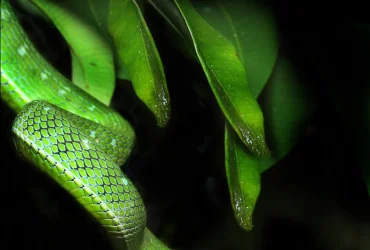 v11i2.282
v11i2.282ISSN: 1800-427X (printed)
eISSN: 1800-427X (online)
DOI:10.47605/tapro.v11i2.282
Published date: 22 November 2022
Pp. 47–53
EDITORIAL : The how and why of scientific naming: What’s in a name?
Michael S. Engel
Section Editor: Taprobanica, the journal of Asian Biodiversity
Quite a lot, actually. Names organize and give meaning to our world. They give us identity and allow us to communicate clearly and efficiently. In the context of scientific names for living and fossil organisms, they link data from around the globe into a synthetic framework from which we can make powerful predictions and effective strategies: everything from governmental policies and next-generation medicines to the origins of diversity and its responses to climate change. These, and many other reasons, are the why, but how is equally important. Unlike folk taxonomies, which are rich in cultural tradition and applicable only at local scales, scientific nomenclature must abide specific rules to remain effective globally, unbounded by the vagaries of local customs. These names must also transcend time so that data from past and future generations can be meaningfully synergized for their greatest benefit. Not surprisingly, to achieve such lofty goals, an entire form of information science is needed, one complete with its own terminology and pragmatic rules. The how of scientific naming is as vital as the why, for to fail at the first means catastrophe for the fundamental reasons of the latter. Imagine bad practices for the scientific naming of drugs or diseases and the tsunami of disastrous impacts that would follow. Now imagine the same if we failed at communicating about disease-transmitting mosquitos or poisonous mushrooms. Scientific names have life-sustaining importance and we cannot be cavalier about taxonomic science and formalized nomenclature.
eISSN: 1800-427X (online)
DOI:10.47605/tapro.v11i2.282
Published date: 22 November 2022
Pp. 47–53
EDITORIAL : The how and why of scientific naming: What’s in a name?
Michael S. Engel
Section Editor: Taprobanica, the journal of Asian Biodiversity
Quite a lot, actually. Names organize and give meaning to our world. They give us identity and allow us to communicate clearly and efficiently. In the context of scientific names for living and fossil organisms, they link data from around the globe into a synthetic framework from which we can make powerful predictions and effective strategies: everything from governmental policies and next-generation medicines to the origins of diversity and its responses to climate change. These, and many other reasons, are the why, but how is equally important. Unlike folk taxonomies, which are rich in cultural tradition and applicable only at local scales, scientific nomenclature must abide specific rules to remain effective globally, unbounded by the vagaries of local customs. These names must also transcend time so that data from past and future generations can be meaningfully synergized for their greatest benefit. Not surprisingly, to achieve such lofty goals, an entire form of information science is needed, one complete with its own terminology and pragmatic rules. The how of scientific naming is as vital as the why, for to fail at the first means catastrophe for the fundamental reasons of the latter. Imagine bad practices for the scientific naming of drugs or diseases and the tsunami of disastrous impacts that would follow. Now imagine the same if we failed at communicating about disease-transmitting mosquitos or poisonous mushrooms. Scientific names have life-sustaining importance and we cannot be cavalier about taxonomic science and formalized nomenclature.
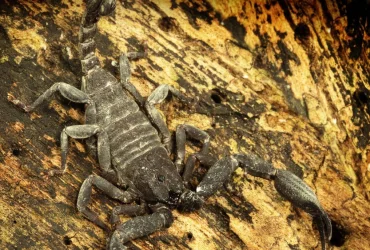 v11i1.281
v11i1.281ISSN: 1800-427X (printed)
eISSN: 1800-427X (online)
DOI:10.47605/tapro.v11i1.281
Submitted date: 23 November 2021
Accepted date: 21 March 2022
Published date: 23 May 2022
Pp. 45–46, Pl. 14.
Diet of the Indian fox (Vulpes bengalensis) in dry scrubland of north Gujarat, India
P. Desai* & N. Dharaiya
*Corresponding author. E-mail: pratikdesai825@gmail.com
Indian fox Vulpes bengalensis, a mesocarnivore of the Indian subcontinent, is distributed widely in all kinds of habitats in India except the Western Ghats. The Indian fox prefers semi-arid landscapes with low rainfall where it is easy to hunt and dig dens and where the vegetation is mainly short grasslands or scrub, thorn thickets or dry deciduous forests. They mostly avoid dense forests, steep terrain, tall grasslands, and true deserts. The Indian fox is listed as of Least Concern (LC) by the IUCN and legally protected in India under schedule II of the Indian Wildlife Protection Act 1972. An opportunistic and omnivorous feeder, its diet includes insects, scorpions, centipedes, small rodents, monitor lizards and other reptiles, ground nesting birds, their eggs and fruit such as Ziziphus sp. (Rhamnaceae), Citrullus vulgaris (Cucurbitaceae), Azadirachta indica (Meliaceae), Mangifera indica (Anacardiaceae), Syzigium cumini (Myrtaceae), Melia azedarach (Meliaceae), and Ficus bengalensis (Moraceae). Some local shepherds have also reported seeing Indian foxes feed on the freshly voided pellets of sheep. Their presence and density in any area is closely related to the abundance of food.
Section Editor: Lee Harding
eISSN: 1800-427X (online)
DOI:10.47605/tapro.v11i1.281
Submitted date: 23 November 2021
Accepted date: 21 March 2022
Published date: 23 May 2022
Pp. 45–46, Pl. 14.
Diet of the Indian fox (Vulpes bengalensis) in dry scrubland of north Gujarat, India
P. Desai* & N. Dharaiya
*Corresponding author. E-mail: pratikdesai825@gmail.com
Indian fox Vulpes bengalensis, a mesocarnivore of the Indian subcontinent, is distributed widely in all kinds of habitats in India except the Western Ghats. The Indian fox prefers semi-arid landscapes with low rainfall where it is easy to hunt and dig dens and where the vegetation is mainly short grasslands or scrub, thorn thickets or dry deciduous forests. They mostly avoid dense forests, steep terrain, tall grasslands, and true deserts. The Indian fox is listed as of Least Concern (LC) by the IUCN and legally protected in India under schedule II of the Indian Wildlife Protection Act 1972. An opportunistic and omnivorous feeder, its diet includes insects, scorpions, centipedes, small rodents, monitor lizards and other reptiles, ground nesting birds, their eggs and fruit such as Ziziphus sp. (Rhamnaceae), Citrullus vulgaris (Cucurbitaceae), Azadirachta indica (Meliaceae), Mangifera indica (Anacardiaceae), Syzigium cumini (Myrtaceae), Melia azedarach (Meliaceae), and Ficus bengalensis (Moraceae). Some local shepherds have also reported seeing Indian foxes feed on the freshly voided pellets of sheep. Their presence and density in any area is closely related to the abundance of food.
Section Editor: Lee Harding
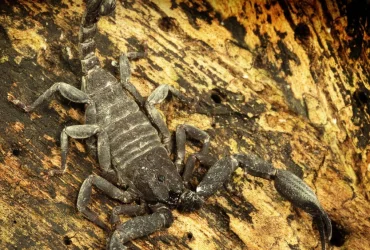 v11i1.280
v11i1.280ISSN: 1800-427X (printed)
eISSN: 1800-427X (online)
DOI:10.47605/tapro.v11i1.280
Submitted date: 24 April 2022
Accepted date: 14 May 2022
Published date: 23 May 2022
Pp. 44
A confirmed record of Russell’s kukri (Oligodon russelius) from Bangladesh
A.I. Barkat & M.F. Rabbe1*
*Corresponding author. E-mail: fazlerabbedu@gmail.com
Oligodon russelius (Daudin, 1803) is closely allied to O. arnensis (Shaw, 1802) and distributed in the central, eastern and northern parts of India. The existing literature on the herpetofauna of Bangladesh provide few reports of O. arnensis, but O. arnensis is confined to southern India and Bandera et al. (2022) assigned northern records to the resurrected O. russelius, with a range limit depicted in India near the border with Bangladesh. Therefore, the previous records from Bangladesh presumably represent O. russelius.
Section Editor: Thasun Amarasinghe
eISSN: 1800-427X (online)
DOI:10.47605/tapro.v11i1.280
Submitted date: 24 April 2022
Accepted date: 14 May 2022
Published date: 23 May 2022
Pp. 44
A confirmed record of Russell’s kukri (Oligodon russelius) from Bangladesh
A.I. Barkat & M.F. Rabbe1*
*Corresponding author. E-mail: fazlerabbedu@gmail.com
Oligodon russelius (Daudin, 1803) is closely allied to O. arnensis (Shaw, 1802) and distributed in the central, eastern and northern parts of India. The existing literature on the herpetofauna of Bangladesh provide few reports of O. arnensis, but O. arnensis is confined to southern India and Bandera et al. (2022) assigned northern records to the resurrected O. russelius, with a range limit depicted in India near the border with Bangladesh. Therefore, the previous records from Bangladesh presumably represent O. russelius.
Section Editor: Thasun Amarasinghe
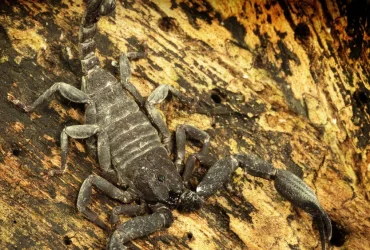 v11i1.279
v11i1.279ISSN: 1800-427X (printed)
eISSN: 1800-427X (online)
DOI:10.47605/tapro.v11i1.279
Submitted date: 18 August 2021
Accepted date: 13 January 2022
Published date: 23 May 2022
Pp. 42–43, Pl. 13.
Two non-native cichlid fish species from the natural waters of Chennai, India
G. Aravind* & J.D.M. Knight
*Corresponding author. E-mail: aravind_manoj@yahoo.com
Non-native fish are introduced throughout the world mainly for improving fisheries, sport, ornamental fish trade and bio-control of mosquitos. The aquarium trade has not come under the scanner of environmentalists, conservationists, ecologists, and policy makers as much as trade in terrestrial endangered species. The avenues from captivity to the wild include the dumping of unwanted fishes, escape from tanks and breeding farms perhaps during storms, and unchecked drainage of water containing organisms from tanks, and public aquaria. Such organisms are usually healthy adults, which have a greater probability of surviving and reproducing in the wild. Introduced aquarium fish represent a major source of ecological destruction that may be locally alarming if ignored.
Section Editor: Upali S. Amarasinghe
eISSN: 1800-427X (online)
DOI:10.47605/tapro.v11i1.279
Submitted date: 18 August 2021
Accepted date: 13 January 2022
Published date: 23 May 2022
Pp. 42–43, Pl. 13.
Two non-native cichlid fish species from the natural waters of Chennai, India
G. Aravind* & J.D.M. Knight
*Corresponding author. E-mail: aravind_manoj@yahoo.com
Non-native fish are introduced throughout the world mainly for improving fisheries, sport, ornamental fish trade and bio-control of mosquitos. The aquarium trade has not come under the scanner of environmentalists, conservationists, ecologists, and policy makers as much as trade in terrestrial endangered species. The avenues from captivity to the wild include the dumping of unwanted fishes, escape from tanks and breeding farms perhaps during storms, and unchecked drainage of water containing organisms from tanks, and public aquaria. Such organisms are usually healthy adults, which have a greater probability of surviving and reproducing in the wild. Introduced aquarium fish represent a major source of ecological destruction that may be locally alarming if ignored.
Section Editor: Upali S. Amarasinghe
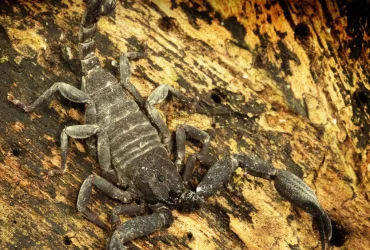 v11i1.278
v11i1.278ISSN: 1800-427X (printed)
eISSN: 1800-427X (online)
DOI:10.47605/tapro.v11i1.278
Submitted date: 13 November 2021
Accepted date: 6 May 2022
Published date: 23 May 2022
Pp. 40–41, Pls. 11–12.
First reports of some Megachilid bees (Hymenoptera) from Kerala, India
A.S. Prakash & C. Bijoy*
*Corresponding author. E-mail: anjusara2025@gmail.com
Family Megachilidae consists of long tongued bees which are easily recognized by the presence of two submarginal cells in the forewing (except in Fideliini) and the female bees from this family (except parasitic forms and Pararhophitini) can be distinguished by the presence of scopa underneath the abdomen. Genus Megachile Latreille, 1802 is one of the most diverse bee genera and they play a significant role in pollination. This genus consists of leafcutter bees, mason bees and resin bees
Section Editor: Max Kasparek
eISSN: 1800-427X (online)
DOI:10.47605/tapro.v11i1.278
Submitted date: 13 November 2021
Accepted date: 6 May 2022
Published date: 23 May 2022
Pp. 40–41, Pls. 11–12.
First reports of some Megachilid bees (Hymenoptera) from Kerala, India
A.S. Prakash & C. Bijoy*
*Corresponding author. E-mail: anjusara2025@gmail.com
Family Megachilidae consists of long tongued bees which are easily recognized by the presence of two submarginal cells in the forewing (except in Fideliini) and the female bees from this family (except parasitic forms and Pararhophitini) can be distinguished by the presence of scopa underneath the abdomen. Genus Megachile Latreille, 1802 is one of the most diverse bee genera and they play a significant role in pollination. This genus consists of leafcutter bees, mason bees and resin bees
Section Editor: Max Kasparek
Hubungi Kami
The ultimate aim of the journal is to provide an effective medium for communication of the latest and best scientific information.
Copyright © 2020 Taprobanica. All Rights Reserved
Jasa Pembuatan Website by IKT




